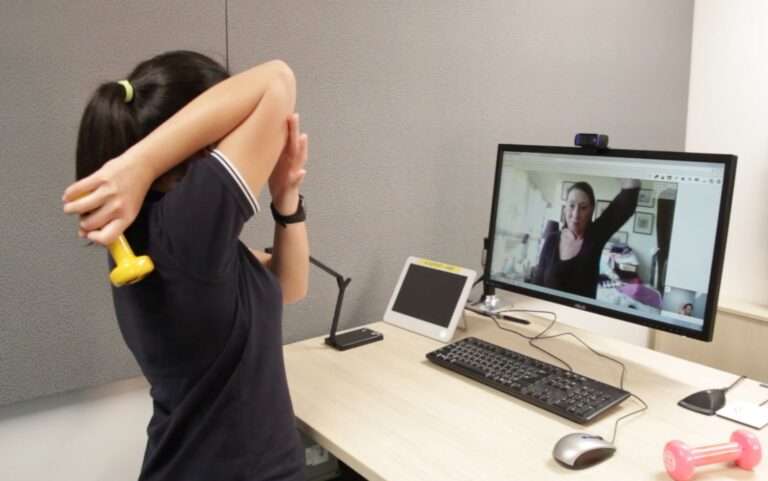Telehealth Physiotherapy

What is Telehealth?
Telehealth refers to a method of receiving healthcare services through the use of technology when it is not possible for you and your physiotherapist to be physically present together. Ideally, you and your physiotherapist will be able to communicate via a video-to-video link, similar to using platforms like Facetime or Skype.
What to Expect From Your Telehealth Appointment During your telehealth appointment
A virtual consultation conducted through a secure video conferencing application. Discussion of your current concerns. Remote assessment of the areas you’re concerned about, with immediate recommendations. Suggestions for equipment modifications, if necessary. Follow-up after the assessment to ensure the suggested strategies are leading to the desired improvement in your function. Recommendations for stretches, strengthening exercises, and video-based programs as needed. All assessments are conducted by fully qualified Physiotherapists and Podiatrists, providing you with evidence-based care.
About Telehealth Appointments
Much of your telehealth appointment will resemble an in-person visit and may include:
In-depth discussion with your physiotherapist about your condition. Demonstration of movements or performance of tests while your clinician observes via the screen. Detailed discussion of the assessment findings. Education about your condition. Development of a treatment plan in collaboration with your clinician. Treatment, including advice, exercises, and further education on managing your condition effectively.
Preparing for Your Telehealth Appointment To prepare for your telehealth appointment, consider the following:
Set up your computer/device in a space that allows your clinician to observe movements such as sitting, standing, bending, squatting, and possibly lying down. Ensure you have the necessary equipment, including a chair, Pilates mat or towel, and light weights (1kg, 2kg, or 3kg). Wear comfortable clothing that allows your clinician to see the relevant body part(s). For example, a singlet or sports bra for shoulder issues, or shorts for hip, knee, or ankle problems.
